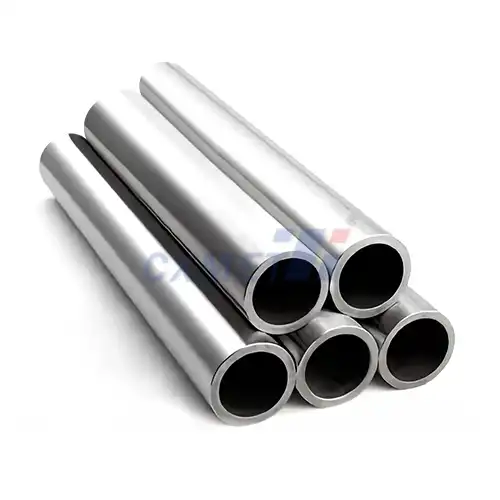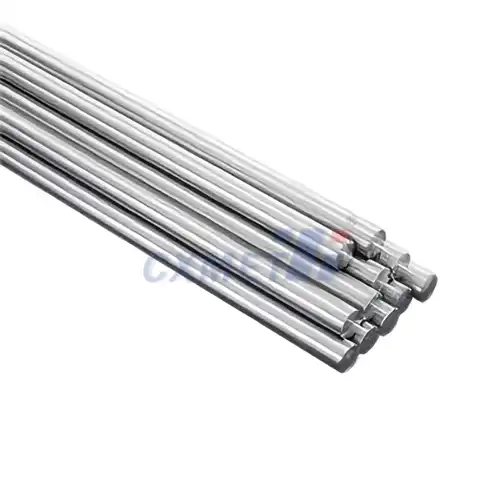- English
- French
- German
- Portuguese
- Spanish
- Russian
- Japanese
- Korean
- Arabic
- Greek
- German
- Turkish
- Italian
- Danish
- Romanian
- Indonesian
- Czech
- Afrikaans
- Swedish
- Polish
- Basque
- Catalan
- Esperanto
- Hindi
- Lao
- Albanian
- Amharic
- Armenian
- Azerbaijani
- Belarusian
- Bengali
- Bosnian
- Bulgarian
- Cebuano
- Chichewa
- Corsican
- Croatian
- Dutch
- Estonian
- Filipino
- Finnish
- Frisian
- Galician
- Georgian
- Gujarati
- Haitian
- Hausa
- Hawaiian
- Hebrew
- Hmong
- Hungarian
- Icelandic
- Igbo
- Javanese
- Kannada
- Kazakh
- Khmer
- Kurdish
- Kyrgyz
- Latin
- Latvian
- Lithuanian
- Luxembou..
- Macedonian
- Malagasy
- Malay
- Malayalam
- Maltese
- Maori
- Marathi
- Mongolian
- Burmese
- Nepali
- Norwegian
- Pashto
- Persian
- Punjabi
- Serbian
- Sesotho
- Sinhala
- Slovak
- Slovenian
- Somali
- Samoan
- Scots Gaelic
- Shona
- Sindhi
- Sundanese
- Swahili
- Tajik
- Tamil
- Telugu
- Thai
- Ukrainian
- Urdu
- Uzbek
- Vietnamese
- Welsh
- Xhosa
- Yiddish
- Yoruba
- Zulu
Is 3D Printing Titanium Alloy Impeller Strong?
3D printing titanium alloy impellers has emerged as a revolutionary manufacturing technique in various industries, particularly aerospace and automotive. This advanced method combines the strength and lightweight properties of titanium alloys with the flexibility and complexity offered by additive manufacturing. The question of strength is crucial, as impellers often operate in high-stress environments where durability and performance are paramount. This blog post will explore the strength of 3D printed titanium alloy impellers, their applications, and the factors that influence their robustness.
How does 3D printing affect the strength of titanium alloy impellers?
The process of 3D printing titanium alloy impellers, also known as additive manufacturing, has a significant impact on the strength and overall properties of the final product. Unlike traditional manufacturing methods, 3D printing builds the impeller layer by layer, allowing for intricate designs and optimized structures that were previously impossible to achieve.
One of the key factors affecting the strength of 3D printed titanium alloy impellers is the microstructure formed during the printing process. The rapid heating and cooling cycles inherent in additive manufacturing can result in a unique grain structure that differs from conventionally manufactured titanium alloys. This microstructure often exhibits fine, elongated grains oriented in the build direction, which can contribute to enhanced strength and fatigue resistance in certain loading conditions.
However, the layer-by-layer construction can also introduce potential weaknesses, such as porosity or lack of fusion between layers if the printing parameters are not optimized. These defects can act as stress concentrators and reduce the overall strength of the impeller. To mitigate these issues, manufacturers employ various strategies, including post-processing techniques like hot isostatic pressing (HIP) to densify the material and reduce porosity.
The choice of titanium alloy also plays a crucial role in determining the strength of the 3D printed impeller. Common alloys used in additive manufacturing include Ti-6Al-4V and Ti-6Al-4V ELI, known for their excellent strength-to-weight ratio and corrosion resistance. These alloys can achieve tensile strengths comparable to or even exceeding those of conventionally manufactured counterparts when proper printing and post-processing techniques are applied.
Another advantage of 3D printing is the ability to optimize the internal structure of the impeller for improved strength and performance. Designers can incorporate lattice structures or topology-optimized geometries that enhance stiffness while reducing weight. This level of design freedom allows for the creation of impellers that are not only strong but also more efficient in their intended application.
What are the advantages of using 3D printed titanium alloy impellers in aerospace applications?
The aerospace industry has been at the forefront of adopting 3D printed titanium alloy impellers due to the numerous advantages they offer. These components play a critical role in various aircraft systems, including engines, fuel pumps, and environmental control systems.
One of the primary benefits of using 3D printed titanium alloy impellers in aerospace applications is the significant weight reduction they offer. Traditional manufacturing methods often result in excessive material usage, as complex geometries require subtractive processes. In contrast, additive manufacturing allows for the creation of hollow or lattice structures within the impeller, reducing weight without compromising strength. This weight savings translates directly into fuel efficiency improvements and increased payload capacity for aircraft.
The ability to produce complex geometries through 3D printing also enables the design of more aerodynamically efficient impeller blades. Engineers can create optimized blade profiles that were previously impossible or prohibitively expensive to manufacture using conventional methods. These improved designs can lead to increased efficiency in fluid handling, whether it's air in a compressor or fuel in a pump system.
Another significant advantage is the reduced lead time and cost associated with prototyping and small-batch production. Traditional impeller manufacturing often requires expensive tooling and molds, which can be time-consuming and costly to produce, especially for low-volume or custom applications. 3D printing eliminates these barriers, allowing for rapid prototyping and iteration of designs. This agility in the development process can lead to faster innovation cycles and more responsive product development in the aerospace industry.
The material properties of 3D printed titanium alloy impellers are particularly well-suited for aerospace applications. Titanium alloys offer an excellent combination of high strength, low density, and corrosion resistance, making them ideal for the demanding environments found in aircraft systems. When properly manufactured, 3D printed titanium alloy impellers can meet or exceed the performance requirements of their conventionally produced counterparts, while offering the additional benefits of design flexibility and weight reduction.
Furthermore, the ability to produce spare parts on-demand using 3D printing technology can significantly reduce inventory costs and improve supply chain efficiency for aerospace manufacturers and operators. This is particularly valuable for legacy aircraft or specialized components that may no longer be in regular production.
Can 3D printed titanium alloy impellers withstand high-temperature and corrosive environments?
The ability of 3D printed titanium alloy impellers to withstand high-temperature and corrosive environments is a critical consideration for many industrial applications, particularly in the chemical processing, oil and gas, and power generation sectors. The inherent properties of titanium alloys, combined with the unique characteristics imparted by the 3D printing process, make these components well-suited for challenging operational conditions.
Titanium alloys are renowned for their excellent corrosion resistance, which stems from their ability to form a stable, protective oxide layer on their surface. This natural passivation makes titanium alloys highly resistant to many corrosive media, including seawater, acids, and chlorides. The 3D printing process does not fundamentally alter this corrosion resistance, and in some cases, may even enhance it due to the fine-grained microstructure that can develop during additive manufacturing.
When it comes to high-temperature performance, 3D printed titanium alloy impellers can maintain their strength and stability at elevated temperatures, typically up to around 500-600°C (932-1112°F), depending on the specific alloy and application. This temperature range covers many industrial processes and makes these impellers suitable for use in turbomachinery, heat exchangers, and other high-temperature fluid handling systems.
However, it's important to note that the exact high-temperature capabilities of 3D printed titanium alloy impellers can vary depending on several factors. The printing process parameters, post-processing treatments, and the specific titanium alloy used all play a role in determining the component's temperature resistance. For instance, some research has shown that the fine-grained structure resulting from 3D printing can lead to improved creep resistance at elevated temperatures compared to conventionally manufactured titanium alloys.
In corrosive environments, 3D printed titanium alloy impellers offer several advantages. The ability to create complex internal channels and surface textures through additive manufacturing can enhance the impeller's resistance to certain types of corrosion, such as crevice corrosion. Additionally, the layer-by-layer construction allows for the incorporation of compositional gradients or localized alloying, which can further tailor the corrosion resistance to specific environmental conditions.
It's worth noting that while 3D printed titanium alloy impellers generally exhibit excellent corrosion resistance, the specific performance can be influenced by the printing process. Factors such as residual stresses, surface roughness, and potential microstructural inhomogeneities need to be carefully controlled to ensure optimal corrosion resistance. Post-processing techniques, such as surface treatments or heat treatments, may be employed to enhance the corrosion resistance of the final product.
For applications requiring extreme temperature resistance beyond the capabilities of standard titanium alloys, advanced alloys or composite materials may be necessary. However, within their operational range, 3D printed titanium alloy impellers have demonstrated remarkable resilience in both high-temperature and corrosive environments, making them a valuable option for demanding industrial applications.
In conclusion, 3D printed titanium alloy impellers have proven to be strong, versatile components that offer significant advantages in terms of design flexibility, weight reduction, and performance optimization. While challenges remain in ensuring consistent quality and overcoming the limitations of current additive manufacturing technologies, the potential for these impellers to revolutionize various industries is clear. As research and development in this field continue to advance, we can expect to see even more innovative applications and improvements in the strength and durability of 3D printed titanium alloy impellers.
At SHAANXI CXMET TECHNOLOGY CO., LTD, we take pride in our extensive product range, which caters to diverse customer needs. Our company is equipped with outstanding production and processing capabilities, ensuring the high quality and precision of our products. We are committed to innovation and continuously strive to develop new products, keeping us at the forefront of our industry. With leading technological development capabilities, we are able to adapt and evolve in a rapidly changing market. Furthermore, we offer customized solutions to meet the specific requirements of our clients. If you are interested in our products or wish to learn more about the intricate details of our offerings, please do not hesitate to contact us at sales@cxmet.com. Our team is always ready to assist you.
References:
1. Dehoff, R. R., et al. (2015). "Site specific control of crystallographic grain orientation through electron beam additive manufacturing." Materials Science and Technology, 31(8), 931-938.
2. Garibaldi, M., et al. (2018). "Metallurgy of high-silicon steel parts produced using Selective Laser Melting." Acta Materialia, 160, 125-136.
3. Herzog, D., et al. (2016). "Additive manufacturing of metals." Acta Materialia, 117, 371-392.
4. Huang, R., et al. (2016). "Energy and emissions saving potential of additive manufacturing: the case of lightweight aircraft components." Journal of Cleaner Production, 135, 1559-1570.
5. Kasperovich, G., & Hausmann, J. (2015). "Improvement of fatigue resistance and ductility of TiAl6V4 processed by selective laser melting." Journal of Materials Processing Technology, 220, 202-214.
6. Liu, S., & Shin, Y. C. (2019). "Additive manufacturing of Ti6Al4V alloy: A review." Materials & Design, 164, 107552.
7. Qian, M., et al. (2015). "Additive manufacturing and microstructure of titanium alloys." Materials Science and Technology, 31(8), 898-911.
8. Sames, W. J., et al. (2016). "The metallurgy and processing science of metal additive manufacturing." International Materials Reviews, 61(5), 315-360.
9. Uhlmann, E., et al. (2015). "Additive manufacturing of titanium alloy for aircraft components." Procedia CIRP, 35, 55-60.
10. Zhang, L. C., et al. (2018). "Manufacture by selective laser melting and mechanical behavior of a biomedical Ti–24Nb–4Zr–8Sn alloy." Scripta Materialia, 143, 94-98.




